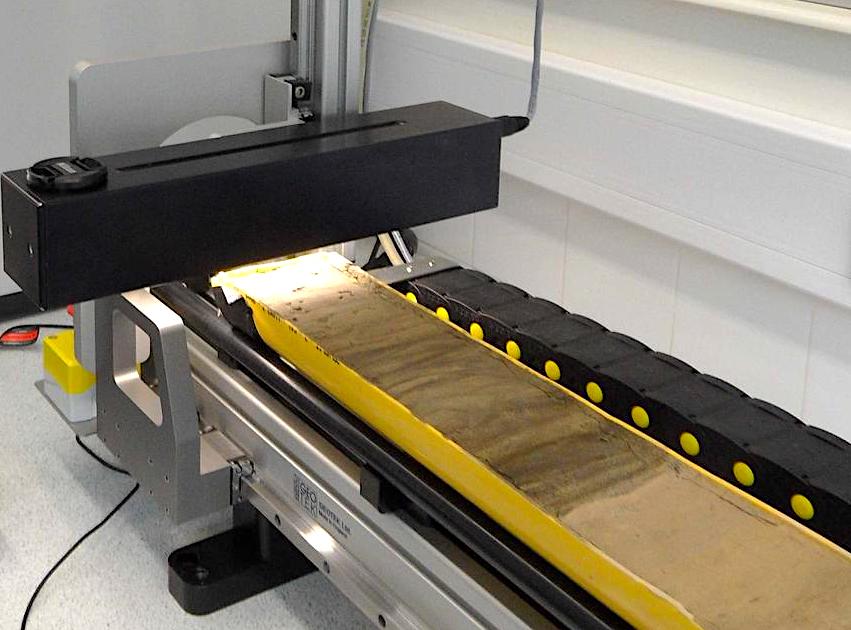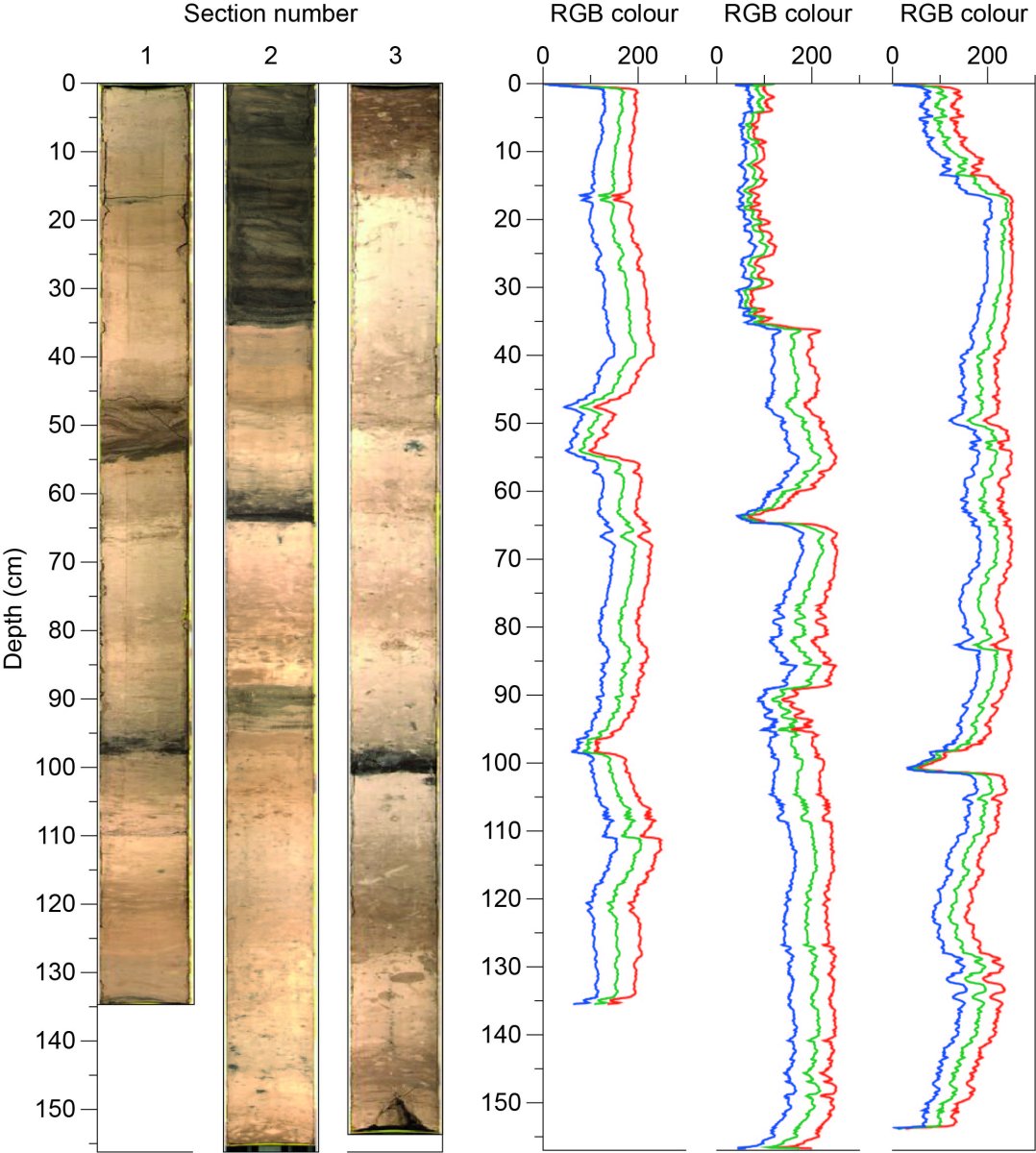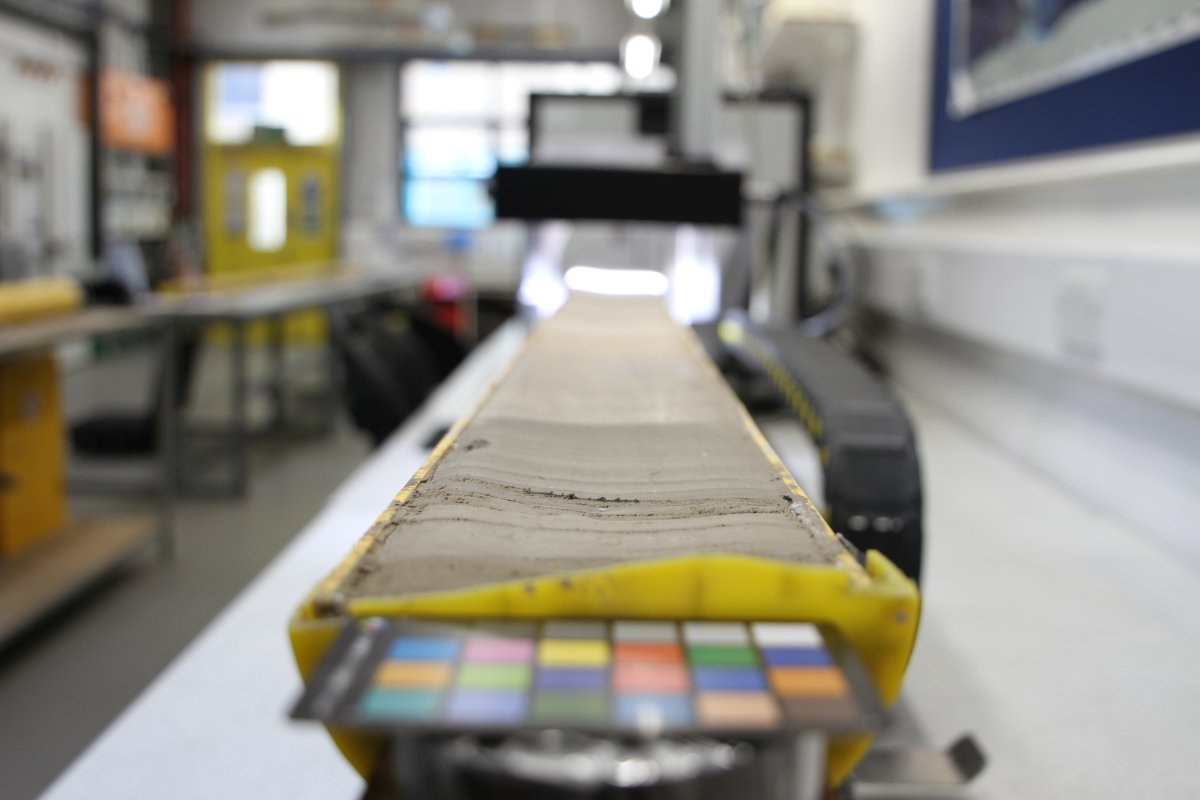The Instrument
Our Geotek MSCL-CIS (Core Imaging System) provides a dedicated track for a Geoscan V linescan camera, allowing routine and rapid acquisition of high-resolution core imagery. These images often prove to be an important digital archive of sediment cores soon after splitting, before colour changes can occur, for example, through oxidation.
Images taken on the MSCL-CIS are of very high-resolution and are precisely depth-registered, so that the images can be correlated with other data sets generated by, for example, our MSCL-S or MSCL-XYZ.
Major benefits of imaging samples with the MSCL-CIS:
- Quick – about 5 minutes per 1.5 m core section
- Easy to use – a computer-controlled high-intensity LED light array
- Adjustable – lighting angle and light intensity can be set for optimum imaging
Core imaging is one of the standardized measurements for freshly cut core samples. Images are often used in scientific reports or publications to visually communicate the nature of the lithology.
Samples and Methods
Only split or cut (half-round) samples can be imaged because a flat surface is needed.

Samples successfully imaged by the MSCL-CIS:
- Half-round sediment core sample
- Split rock core samples
- Split coral samples
- Split stalagmite and stalactite samples
Sample preparation
A flat surface is required when imaging samples. Hence, samples need to be split prior to imaging.
Measurement procedure
A sample is loaded on the track. The camera and LED lighting system move over the sample automatically and an image is captured.
Data and Applications
The MSCL-CIS generates high-resolution images that can be magnified to show mm-scale detail. Red, green, and blue colour data can be extracted from these images.

Scientific Applications
The main scientific applications for the MSCL-CIS are:
- Visual representation of split sample
- Extraction of red, green, blue colour data for time series analysis.
- Sediment characterisation
- Lithological descriptions
- Digital archiving of freshly cut core samples (i.e., before oxidation affects sediment colour).
